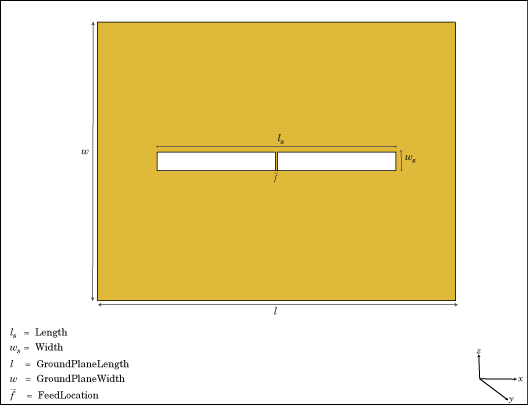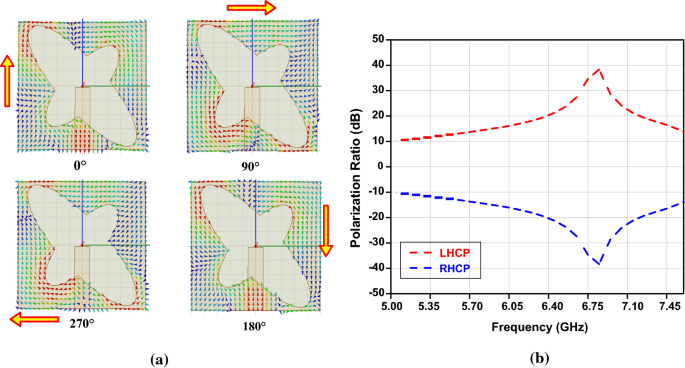Resonant Frequency Of Slot Antenna
- Resonant Frequency Of Slot Antenna Booster
- Resonant Frequency Of Slot Antennas
- Resonant Frequency Of Slot Antenna Reception
- Resonant Frequency Of Slot Antenna Combo
- Resonant Frequency Of Slot Antenna Amplifier

Magnetic current distribution on the UHF miniaturized slot antenna at the resonance frequency (600 MHz). The figure shows the ground-plane side of the antenna and the meshing configuration used in the method of moments calculations. PiCASSO software was used in these calculations. Opposing the current on any other sections. 105 that, due to the change in εr, the resonance frequency of the slot is now lowered to a resonance of about 5.7GHz. The thicknesses of the supporting substrates (layers 1, 2, 3 in Figure 5.1) are now adjusted to be nominally one quarter of a wavelength thick at 5.7GHz. In an instructable, the formula for calculating antenna length was given as 'length in meters =300 / frequency in MHz'. The example given was for a Bluetooth antenna with a frequency of 2450MHz. The antenna length was calculated as 300/2450 = 0.1225m = 12cm. The author then divided it by 4 to make a 'quarter wave' antenna length of 30mm.
Antenna Basic Theory Tutorial Includes:
Basic antenna theoryPolarisationResonance & bandwidthGain & directivityFeed impedance
Radio antennas have a bandwidth over which they can operate effectively; even wideband antennas. Many antennas operate in a resonant mode and this gives them a relatively narrow bandwidth over which they are able to provide excellent performance.
Antenna resonance and bandwidth are two properties for antennas that are closely linked.
Resonant Frequency Of Slot Antenna Booster
Whether the radio antenna is used for broadcasting, TV and radio reception, WLAN, cellular telecommunications, PMR, amateur radio, or any other application, the performance of the antenna is paramount. In this the antenna resonant frequency and the antenna bandwidth are of great importance.
Antenna resonance
A radio antenna is a form of tuned circuit consisting of inductance and capacitance, and as a result it has a resonant frequency. This is the frequency where the capacitive and inductive reactances cancel each other out. At this point the antenna appears purely resistive, the resistance being a combination of the loss resistance and the radiation resistance.
The capacitance and inductance of an RF antenna are determined by its physical properties and the environment where it is located. The major feature of the antenna design is its dimensions. It is found that the larger the antenna or more strictly the antenna elements, the lower the resonant frequency. For example antennas for UHF terrestrial television have relatively small elements, while those for VHF broadcast sound FM have larger elements indicating a lower frequency. Antennas for short wave applications are larger still.
Antenna bandwidth

An antenna bandwidth is governed by whether it is able to operate within the parameters required for that particular application. In some scenarios impedance may be an issue, in others it may be gain, or beamwidth. In this way there are several ways in which the performance of an antenna bandwidth can be judged.
In most cases, antenna are operated around the resonant point. This means that there is only a limited bandwidth over which an RF antenna design can operate efficiently. Outside this the levels of reactance rise to levels that may be too high for satisfactory operation. Other characteristics of the antenna may also be impaired away from the centre operating frequency.
The antenna bandwidth is particularly important where radio transmitters are concerned as damage may occur to the transmitter if the antenna is operated outside its operating range and the radio transmitter is not adequately protected. In addition to this the signal radiated by the RF antenna may be less for a number of reasons.
For receiving purposes the performance of the antenna is less critical in some respects. It can be operated outside its normal bandwidth without any fear of damage to the set. Even a random length of wire will pick up signals, and it may be possible to receive several distant stations. However for the best reception it is necessary to ensure that the performance of the RF antenna design is optimum.
Resonant Frequency Of Slot Antennas
Impedance bandwidth
One major feature of an radio antenna that does change with frequency is its impedance. This in turn can cause the amount of reflected power to increase. If the radio antenna is used for transmitting it may be that beyond a given level of reflected power damage may be caused to either the transmitter or the feeder, and this is quite likely to be a factor which limits the operating bandwidth of an antenna. Today most transmitters have some form of SWR protection circuit that prevents damage by reducing the output power to an acceptable level as the levels of reflected power increase. This in turn means that the efficiency of the station is reduced outside a given bandwidth. As far as receiving is concerned the impedance changes of the antenna are not as critical as they will mean that the signal transfer from the antenna itself to the feeder is reduced and in turn the efficiency will fall. For amateur operation the frequencies below which a maximum SWR figure of 1.5:1 is produced is often taken as the acceptable bandwidth.

In order to increase the bandwidth of an antenna there are a number of measures that can be taken. One is the use of thicker conductors. Another is the actual type of antenna used. For example a folded dipole has a wider bandwidth than a non-folded one. In fact looking at a standard television antenna it is possible to see both of these features included.

Radiation pattern
Resonant Frequency Of Slot Antenna Reception
Another feature of an antenna that changes with frequency is its radiation pattern. In the case of a beam it is particularly noticeable. In particular the front to back ratio will fall off rapidly outside a given bandwidth, and so will the gain. In an antenna such as a Yagi this is caused by a reduction in the currents in the parasitic elements as the frequency of operation is moved away from resonance. For beam antennas such as the Yagi the radiation pattern bandwidth is defined as the frequency range over which the gain of the main lobe is within 1 dB of its maximum.
For many beam antennas, especially high gain ones it will be found that the impedance bandwidth is wider than the radiation pattern bandwidth, although the two parameters are inter-related in many respects.
Resonant Frequency Of Slot Antenna Combo
Antenna bandwidth is a key issue for any radio antenna. Whilst most antennas are operated in a resonant mode, many others are not. Whatever the radio antenna, it has a limited band over which it can operate effectively and within the parameters set out for it.
Resonant Frequency Of Slot Antenna Amplifier
More Antenna & Propagation Topics:
EM wavesRadio propagationIonospheric propagationGround waveMeteor scatterTropospheric propagationCubical quadDipoleDisconeFerrite rodLog periodic antennaParabolic reflector antennaVertical antennasYagiAntenna groundingCoax cableWaveguideVSWRAntenna balunsMIMO
Return to Antennas & Propagation menu . . .